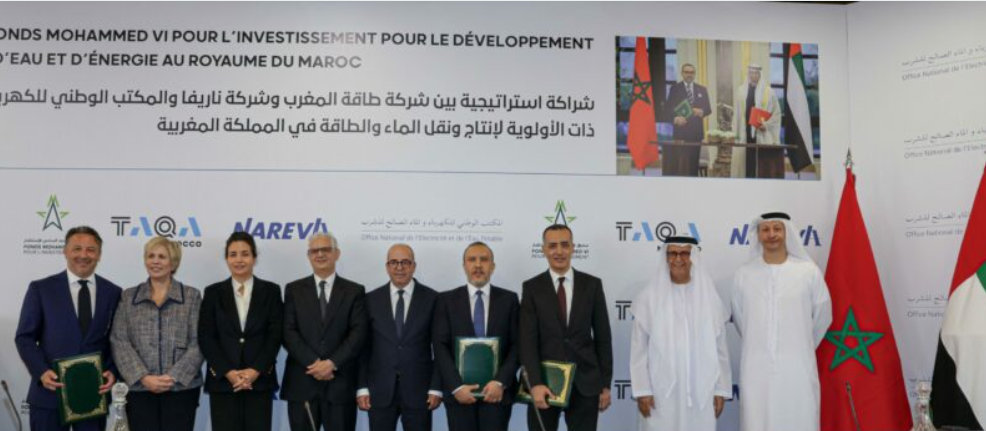A major investment initiative backed by a Moroccan-Emirati consortium has been launched to support Morocco’s push toward energy independence and more sustainable water management. The plan, which will pour tens of billions of dirhams into strategic infrastructure, aims to create over 25,000 jobs by 2030, including 10,000 permanent positions.
At the heart of this ambitious program is a partnership that brings together Taqa Morocco, Nareva, and the Mohammed VI Investment Fund, working alongside the Moroccan government and the National Office for Electricity and Drinking Water (ONEE). The effort stems from a high-level joint declaration signed on December 4, 2023, by King Mohammed VI and the President of the United Arab Emirates, Sheikh Mohammed bin Zayed Al Nahyan.
The initiative has three main objectives: ensuring water security, boosting energy self-sufficiency, and reinforcing Morocco’s industrial sovereignty. Several large-scale projects are on the table. One key element is the construction of an inter-basin transfer system linking the Sebou and Oum Rabia rivers. This infrastructure will enable the annual transfer of up to 800 million cubic meters of water. In addition, new seawater desalination plants are planned, with a targeted output of 900 million cubic meters per year, at a cost not exceeding 4.50 dirhams per cubic meter before taxes.
On the energy front, the program includes the development of a 1,400-kilometer high-voltage direct current (HVDC) line to connect the southern and central regions of the country. This line will carry a capacity of 3,000 megawatts. Complementing this will be the construction of combined-cycle natural gas power plants in Tahaddart, adding roughly 1,500 megawatts to the grid. The plan also calls for the deployment of 1,200 megawatts in new renewable energy projects.
Three memoranda of understanding have already been signed between the consortium, the Moroccan government, and ONEE to initiate these infrastructure works. Financing for the program will be structured by the private sector partners and sourced from both domestic and international lenders.
This large-scale collaboration signals a new phase in Morocco’s energy and water transition—one that combines economic opportunity with long-term resilience.
